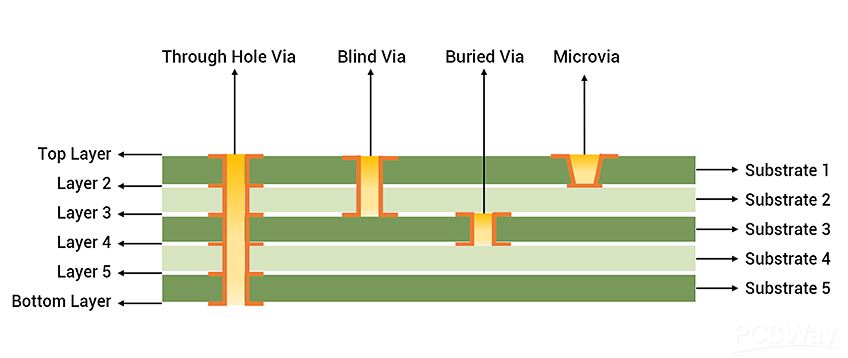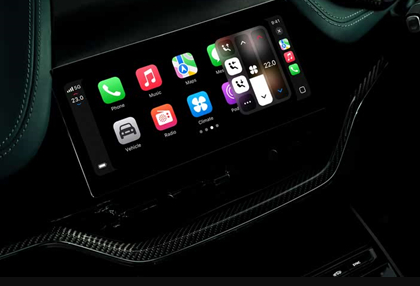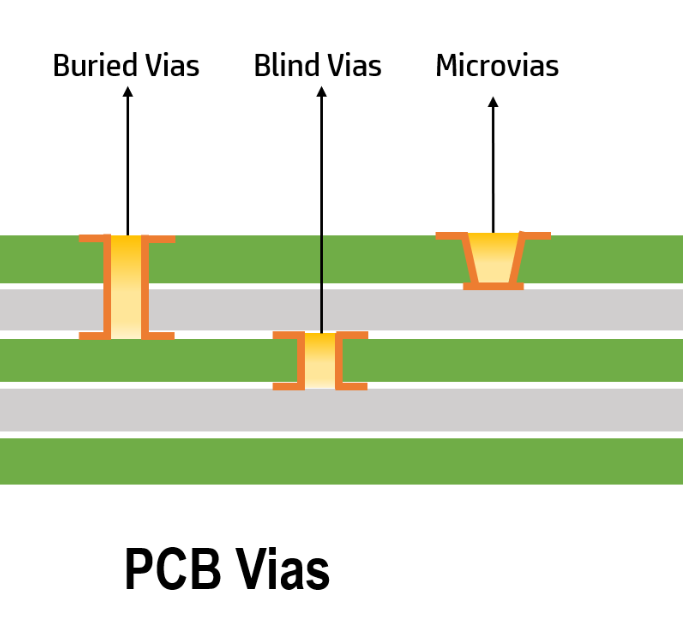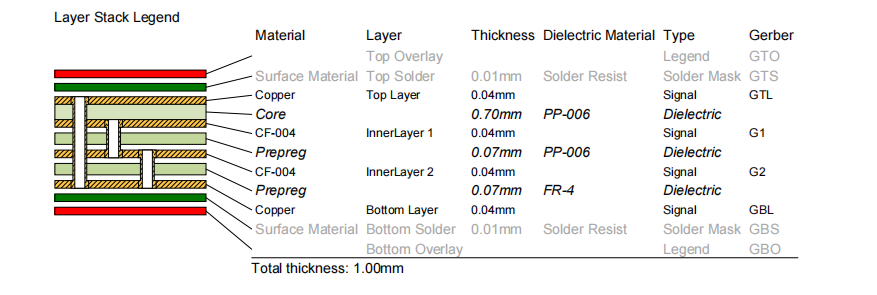In the fast-evolving world of automotive technology, infotainment systems have become a cornerstone of modern vehicles, offering entertainment, navigation, and connectivity. At the heart of these advanced systems lie High-Density Interconnect (HDI) PCBs, which enable compact, reliable, and high-performance electronics. If you're wondering why HDI PCBs are ideal for infotainment systems or how to design them effectively, this guide is for you. We'll explore the benefits of HDI technology, including high-density interconnect advantages, and dive into key design considerations like HDI PCB design rules, microvia technology, and fine-pitch components PCB integration.
What Are HDI PCBs and Why Do They Matter for Infotainment Systems?
HDI PCBs are specialized printed circuit boards that feature a higher wiring density per unit area compared to traditional PCBs. This is achieved through advanced techniques like microvias, blind and buried vias, and finer traces. For infotainment systems in vehicles, which require compact designs to fit into limited dashboard space while handling complex functionalities, HDI PCBs are a game-changer. They allow engineers to pack more components into smaller spaces without sacrificing performance or reliability.
Infotainment systems integrate features like touchscreens, voice recognition, GPS, and wireless connectivity, all of which demand robust signal integrity and minimal interference. HDI technology supports these needs by enabling tighter routing and reducing signal loss. In the sections below, we'll break down the specific advantages and design considerations to help you understand how to leverage HDI PCBs for cutting-edge automotive applications.

Key Benefits of HDI PCBs in Infotainment Systems
The use of HDI PCBs in infotainment systems offers several advantages, making them a preferred choice for automotive electronics. Here are the high-density interconnect advantages that stand out:
1. Compact Design for Space-Constrained Applications
Infotainment systems must fit into tight spaces within a vehicle's dashboard. HDI PCBs allow for significant size reduction—up to 60% smaller than traditional boards—by stacking multiple layers and using microvias for interconnections. This compactness frees up space for other components or allows for sleeker, more ergonomic designs.
2. Enhanced Signal Integrity for High-Speed Data
Modern infotainment systems handle high-speed data for streaming media, real-time navigation, and vehicle-to-everything (V2X) communication. HDI PCBs minimize signal loss and crosstalk by supporting shorter trace lengths and tighter impedance control, often maintaining values as precise as 50 ohms for critical signals. This ensures smooth operation even at data rates exceeding 5 Gbps.
3. Support for Fine-Pitch Components PCB Integration
Infotainment systems often use fine-pitch components like Ball Grid Arrays (BGAs) with pin spacings as small as 0.4 mm. HDI PCBs are designed to accommodate these components with finer traces (down to 3 mils) and smaller pad sizes, ensuring reliable connections without risking shorts or misalignment.
4. Improved Thermal Management
With multiple components packed closely together, heat dissipation is a concern. HDI PCBs can incorporate thermal vias and advanced materials with higher thermal conductivity (up to 1.5 W/mK) to manage heat effectively, preventing overheating in enclosed automotive environments.
5. Cost Efficiency in High-Volume Production
While HDI PCBs may have higher initial design costs due to advanced manufacturing processes, they reduce overall system costs by minimizing the need for additional boards or connectors. For large-scale automotive production, this translates to significant savings over time.

Design Considerations for HDI PCBs in Infotainment Systems
Designing HDI PCBs for infotainment systems requires careful planning to ensure performance, reliability, and manufacturability. Below are critical HDI PCB design rules and considerations, focusing on microvia technology and fine-pitch components PCB integration.
1. Understanding HDI PCB Design Rules
HDI PCB design rules are stricter than those for standard PCBs due to the smaller geometries and higher layer counts involved. Here are some key guidelines:
- Trace Width and Spacing: Maintain minimum trace widths of 3-4 mils and spacing of 3 mils to prevent signal interference and ensure manufacturability. For high-speed signals, consider controlled impedance with tolerances of ±10%.
- Layer Stacking: Plan for 6-12 layers or more, using sequential lamination to integrate blind and buried vias. Keep power and ground planes adjacent to signal layers to reduce electromagnetic interference (EMI).
- Via Placement: Avoid placing vias under fine-pitch components to prevent solder wicking. Use via-in-pad designs for BGAs, ensuring proper plating to avoid voids.
- Aspect Ratio for Vias: Maintain an aspect ratio (depth-to-diameter) of 0.75:1 for microvias to ensure reliable plating and filling during fabrication.
Following these rules helps balance performance with manufacturing feasibility, especially for complex infotainment systems.
2. Leveraging Microvia Technology for Higher Density
Microvia technology is a cornerstone of HDI PCBs, enabling connections between layers in a much smaller footprint than traditional through-hole vias. Microvias, with diameters as small as 4 mils (100 microns), are typically laser-drilled for precision. Here’s how they benefit infotainment system designs:
- Increased Routing Density: Microvias allow for more connections in a smaller area, supporting the dense layouts required for infotainment systems.
- Reduced Signal Path Length: Shorter vias mean faster signal transmission, with propagation delays reduced by up to 20% compared to standard vias.
- Blind and Buried Vias: These types of microvias connect specific layers without passing through the entire board, freeing up space for additional routing on outer layers.
However, microvia technology requires careful design to avoid reliability issues. For instance, stacking more than two microvias vertically (known as stacked microvias) can lead to thermal stress failures during assembly. Opt for staggered microvias or limit stacking to improve durability.

3. Accommodating Fine-Pitch Components PCB Layouts
Infotainment systems rely on fine-pitch components to achieve high functionality in limited space. Designing for these components on HDI PCBs involves specific strategies:
- Pad Design: Use non-solder mask defined (NSMD) pads for fine-pitch BGAs to improve solder joint reliability. Pad diameters should be 20-30% smaller than the ball diameter, typically around 0.25 mm for 0.4 mm pitch components.
- Routing Challenges: Escape routing for fine-pitch components often requires microvias directly under pads (via-in-pad). Fill and cap these vias to prevent solder voids during reflow.
- Component Placement: Space components to allow for adequate heat dissipation and avoid overcrowding, which can lead to thermal hotspots. Maintain at least 0.5 mm clearance between components unless design constraints dictate otherwise.
These considerations ensure that fine-pitch components integrate seamlessly into HDI layouts, maintaining both electrical and mechanical reliability.
4. Signal Integrity and EMI Mitigation
High-speed signals in infotainment systems are prone to degradation due to crosstalk and EMI. HDI PCBs can address these issues through:
- Controlled Impedance: Design traces with specific widths and dielectric thicknesses to achieve impedance values like 50 ohms for single-ended signals or 100 ohms for differential pairs, with a tolerance of ±5%.
- Ground Planes: Use continuous ground planes beneath signal layers to provide a return path and reduce EMI. Avoid splitting ground planes under high-speed traces.
- Shielding: Incorporate shielding layers or guard traces around sensitive signals to minimize interference from nearby components or external sources.
Simulation tools can help predict and optimize signal integrity during the design phase, ensuring that infotainment systems operate without glitches.
5. Material Selection for Durability and Performance
Choosing the right materials is crucial for HDI PCBs in automotive environments, where temperature fluctuations and vibrations are common. Consider:
- Dielectric Materials: Use low-loss materials with a dielectric constant (Dk) of 3.0-3.5 for high-speed signals to minimize signal attenuation.
- Thermal Stability: Select laminates with a glass transition temperature (Tg) of at least 170°C to withstand soldering processes and operating conditions ranging from -40°C to 85°C.
- Copper Thickness: Opt for 0.5 oz to 1 oz copper for inner layers to balance conductivity and thermal management without increasing board thickness excessively.
These material choices enhance the longevity and reliability of HDI PCBs in infotainment applications.

Manufacturing Challenges and Solutions for HDI PCBs
While HDI PCBs offer numerous benefits, their manufacturing process is more complex than that of standard boards. Here are common challenges and how to address them:
- Microvia Reliability: Poorly drilled or filled microvias can lead to open circuits. Work with experienced fabricators who use laser drilling and copper plating techniques to ensure consistent quality.
- Layer Alignment: Misalignment in multilayer HDI boards can cause signal issues. Use advanced registration techniques and tighter tolerances (e.g., ±2 mils) during lamination.
- Cost Management: Balance design complexity with cost by optimizing layer count and via usage. Avoid over-specifying features that aren’t critical to performance.
Collaboration with a skilled manufacturing partner is essential to overcome these hurdles and deliver high-quality HDI PCBs for infotainment systems.
Future Trends: HDI PCBs in Next-Generation Infotainment Systems
As infotainment systems evolve, HDI PCBs will play an even larger role in supporting emerging technologies. Trends to watch include:
- Integration with AI: Artificial intelligence for voice assistants and predictive navigation will require even denser interconnects and faster data processing, pushing HDI designs to new limits.
- 5G Connectivity: With 5G rollout, infotainment systems will need HDI PCBs capable of handling frequencies up to 28 GHz, demanding ultra-low-loss materials and precise impedance matching.
- Flexible HDI PCBs: Flexible or rigid-flex HDI boards may become more common to fit curved or unconventional dashboard designs, enhancing both aesthetics and functionality.
Staying ahead of these trends will ensure that your HDI PCB designs remain competitive in the rapidly changing automotive landscape.
Conclusion: Harnessing HDI PCBs for Superior Infotainment Systems
HDI PCBs are indispensable for modern infotainment systems, offering unmatched benefits like compact design, enhanced signal integrity, and support for fine-pitch components PCB layouts. By adhering to HDI PCB design rules, leveraging microvia technology, and addressing manufacturing challenges, engineers can create reliable, high-performance electronics that meet the demands of today’s vehicles. Whether you're designing for current models or future innovations, understanding high-density interconnect advantages will give you a competitive edge in automotive electronics.
At ALLPCB, we’re committed to supporting your HDI PCB projects with advanced manufacturing capabilities and expert guidance. Explore how our solutions can help bring your infotainment system designs to life with precision and efficiency.



